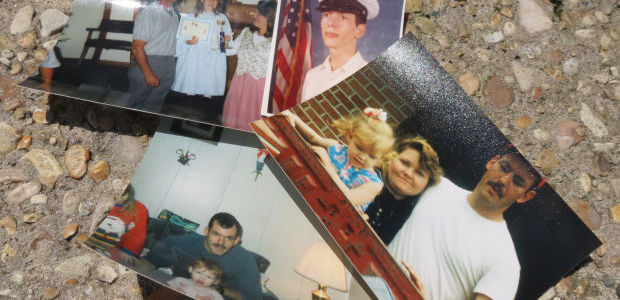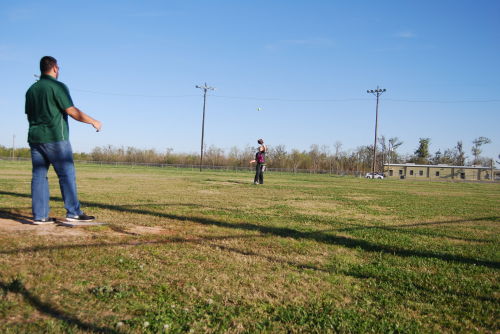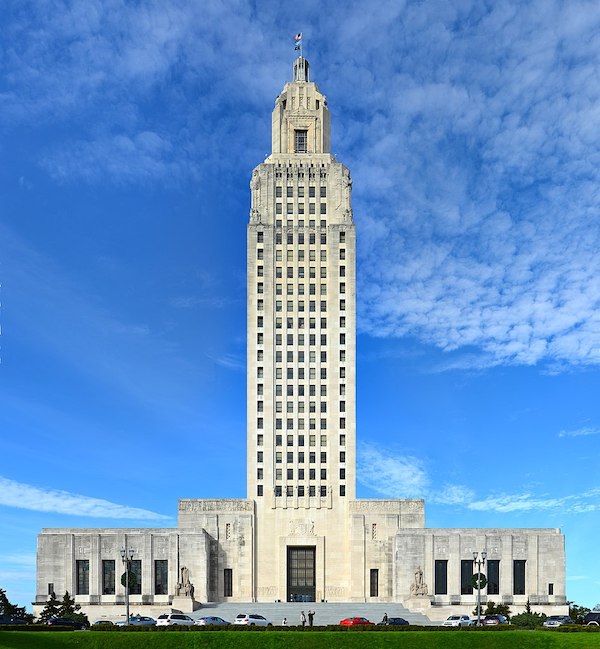
Clearer picture emerging as investigation continues
April 23, 2013Re-entry badges available in Lafourche
April 23, 2013By ERIC BESSON
eric@tri-parishtimes.com
It was while selling snowballs that Lloyd Olin was struck by the Bayou Blue recreation complex’s mediocrity.
Amid a national recession, one family returned to Olin’s private stand on a daily basis. Their vacation fund was depleted, so with Disney World unaffordable, the parents treated their two kids to a daily pleasure closer to home.
“That made the impression that I really needed to do something with recreation so we could offer more activities for families to come for free and use the facility,” said Olin, the recreation district’s director since 2008. “We have to improve. We don’t offer any other services, besides baseball, to the youth of Bayou Blue.”
On May 4, Bayou Blue residents of Lafourche Parish will determine whether Olin and his board of directors’ ambitious proposal to transform two walking tracks and four decaying baseball fields – plagued by drainage woes and dark each night despite having light poles – into a sprawling public complex that would be among the parish’s predominant quality-of-life amenities.
The 9.9-mill property-tax proposal that faces Ward 11 voters is a referendum on the park’s future. Frankly, it is boom or bust: a $4.2 million recreational infusion in a town that has shown substantial growth in the last decade versus further degradation of the limited offerings present today.
If voters approve the measure, district taxpayers with homestead-exempt property appraised at $150,000 would see their bill rise by $74.25. The tax would be scheduled to sunset after 20 years.
The district already collects 4.52 mills from a tax approved in 2008; it equates to a $33.90 tax bill under the same circumstances.
If the tax hike passes, the recreation board intends to sell roughly $4.2 million in bonds. Twenty-five percent of the money would be used to level the complex’s land, dig ditches, add lights and replace termite-infested poles, existing problems the district can’t afford to rectify with the approximately $100,000 it collects annually.
Beyond improving dilapidation, the district would spruce up the vast property it owns. Plans include erecting a 150-foot fishing pier, a supersized pavilion, a picnic area among cypress trees and a water-spray playground, Olin said. They would also add three soccer/football fields, two basketball courts, a beach volleyball court and an on- and off-road bike track.
Olin said the goal is to complete the projects within three years of selling the bonds.
“This isn’t going to be a 10-year-long, drawn-out thing,” he said.
If the recreation district’s tax base continues to grow through subdivision developments, the millage may be reduced in the future, he said, adding that the proposed complex would generate revenue that could be used to pay down the debt more quickly.
The U.S. Census Bureau recognized Bayou Blue the town as designated place for the first time in 2010. The bureau reported Bayou Blue’s population at 12,352 in 2010, up 8 percent from the 11,402 the bureau estimated in its five-year survey from 2007-11.
Of the town’s current population, 31.6 percent are 19 years old or younger, which is tied with Gray for the highest share of youth among all Census Designated Places in Lafourche and Terrebonne parishes
Families fill 77 percent of the Bayou Blue households, the average size of which is 2.9 people, according to the bureau.
But Bayou Blue is shared between two parishes, and although the Terrebonne residents – Olin among them – do and will use the facility, they will have no say in the proposed tax and won’t have to pay if it passes.
In attempting to balance the cost among the park’s users, the recreation district is ironing the wrinkles from a tiered fee plan for utilizing the dreamed facility. The membership program being considered would charge Terrebonne residents more money for sport registration, for example, than Lafourche residents.
Olin added that the water-spray park, if realized, would be open only to Lafourche residents on selected days of the month to offer a less-crowded experience to taxpayers.
Dedicated recreation funding in Lafourche Parish comes from two sources.
Lafourche Parish Government collects a 1.54-mill parishwide tax – expected to raise $1.4 million this year – and divvies the collections among seven recreation districts and miscellaneous parish-sponsored projects.
Four districts collect their own property-tax revenue, and the current rate for Bayou Blue ranks second among those behind Gheens’ 9.96 mills.
If the Bayou Blue tax passes, it will be the second-highest recreation property tax in the Tri-parish area, about half a mill less than Bayou Black in Terrebonne.
The district’s director is optimistic the tax will pass, saying commissioners have been upfront with the voters on how the revenue would be used.
“We have a plan,” Olin said. “We know what we want to do.”
Kylee Billiot, 12, catches a softball thrown by her father Zach Billiot on a Bayou Blue baseball diamond. The district overseeing this field and three others is at a crossroads: commissioners will either struggle to maintain the status quo or completely revamp the complex, pending voters’ choice on a 9.9-mill property tax hike May 4.










